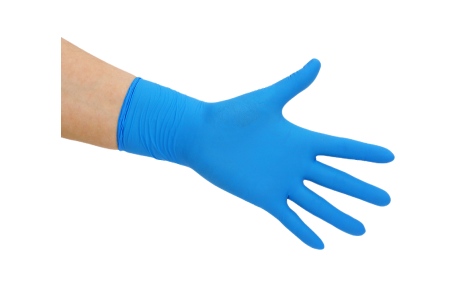Are Nitrile Gloves Food Grade Safe: Is Your Health at Risk?
Published on 2023/2/9

Share to:
Are Nitrile Gloves Food Grade Safe: Is Your Health at Risk?
Are nitrile gloves safe for food preparation? They can certainly be used for this purpose, as long as proper cleaning, hand washing, and fitting techniques are followed.
Are nitrile gloves food-grade safe? The answer to this question depends on what you mean by ‘food grade’. Some aspects of the safety of nitrile gloves depend on how the glove is manufactured, while others depend on how the glove is used. In general, the safer a food-grade product is, the higher its shelf life will be and the fewer quality control checks it will require before reaching store shelves or after leaving them. Quick review: Are nitrile gloves safe for use in food production? If used correctly, they can certainly be. However, many manufacturers aren’t aware of some practices that could pose a risk to their customers’ health if not taken care of properly.
What is the Shelf Life of Nitrile Gloves?
The shelf life of any food-grade product depends on many factors, including manufacturing standards, how the product is handled, and the product’s intended use. Although manufacturers of food-grade products usually have guidelines for recommended storage temperatures and periods, there are no regulations or guidelines about storing them at the location where they’ll be used. The best practice is to store food-grade gloves at room temperature, away from sources of heat, such as ovens or microwaves. Nitrile gloves are designed to be used for one or two days. If they are stored at room temperature, they’ll last indefinitely with no loss of effectiveness.
Proper Glove Use
Do you still use regular cotton gloves for food preparation? If so, it’s time to switch to a food-grade alternative. Cotton is a common allergen that could cause allergic reactions in some people. It can also harbor harmful bacteria and viruses. Manufacturers of food-grade gloves are required to eliminate most, if not all, of these allergens. Though cotton allergies are less common than latex allergies, more people have them. Many people, especially those with mild allergies, report that they’re less likely to have symptoms when they’re in contact with products made from latex, as compared to cotton. Cotton also absorbs dust and other particles, which can increase contamination. When the cotton is removed from food-grade gloves, this dust can be transferred to the food itself.
Safety Considerations for Food-grade Nitrile Gloves
Manufacturers of food-grade nitrile gloves are required to test them to ensure their food safety. This testing includes the gloves’ resistance to the transmission of harmful bacteria, viruses, and other microorganisms. The Food and Drug Administration (FDA) requires that manufacturers test gloves that are intended for contact with food. However, many manufacturers also test non-food-contact gloves to ensure their safety, just to be on the safe side. Part of the safety of food-grade nitrile gloves depends on how they’re used. No glove is 100% safe when it’s used improperly. For example, improper-fitting gloves can be torn or damaged. These gloves can also be punctured by sharp objects and contaminated by bacteria and viruses that can be transferred to foods through the air. In some cases, these conditions can lead to illness.
Some Practices that Increase the Risk to Food Safety with Nitrile Gloves
- Hand washing - Wearing gloves while handling raw meat, poultry, seafood, produce, eggs, or milk - Ready-to-eat (RTE) foods, such as sandwiches or salads - At-home canning and freezing Hand washing: Hand washing is one of the most important steps in maintaining food safety. It removes contaminants from the hands, which can then be safely handled with a glove. However, many people don’t wash their hands properly. When washing your hands, you want to ensure that there are no traces of food on your hands. Raw food, such as raw chicken or uncooked fish, should be the only thing on your hands when you’re done. Foods that have been cooked, such as beans or pizza, can be safely rinsed with water and then dried with a paper towel. If you have raw chicken on your hands, you should be rinsing them with water before handling other foods. Also, when putting on a new pair of gloves, you should make sure that your hands are clean. This will help you avoid transferring bacteria from your hands to the food or tools you’re handling.
Conclusion
Are nitrile gloves safe for food preparation? They can certainly be used for this purpose, as long as proper cleaning, hand washing, and fitting techniques are followed. However, some practices could pose a risk to food safety. For example, if used improperly, they can be punctured by sharp objects, contaminated by bacteria and viruses, and used on RTE foods, such as ready-to-eat foods. Nitrile gloves are designed to be used for one or two days before they start to lose effectiveness. They can be reused if they’re cleaned properly and if they’re stored at room temperature. When in doubt, don’t use them. Regular cotton gloves are safer.


 WhatsApp
WhatsApp
Send us your message
You can send an email asking for the price and detailed information of this product. We will reply you as soon as we receive your email